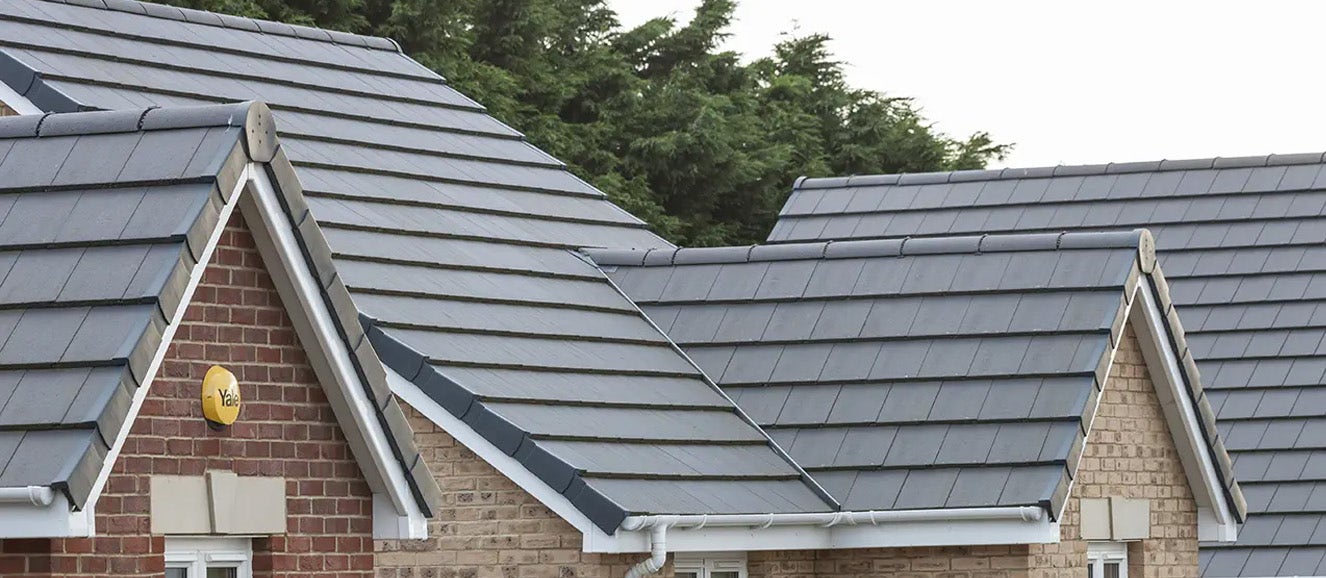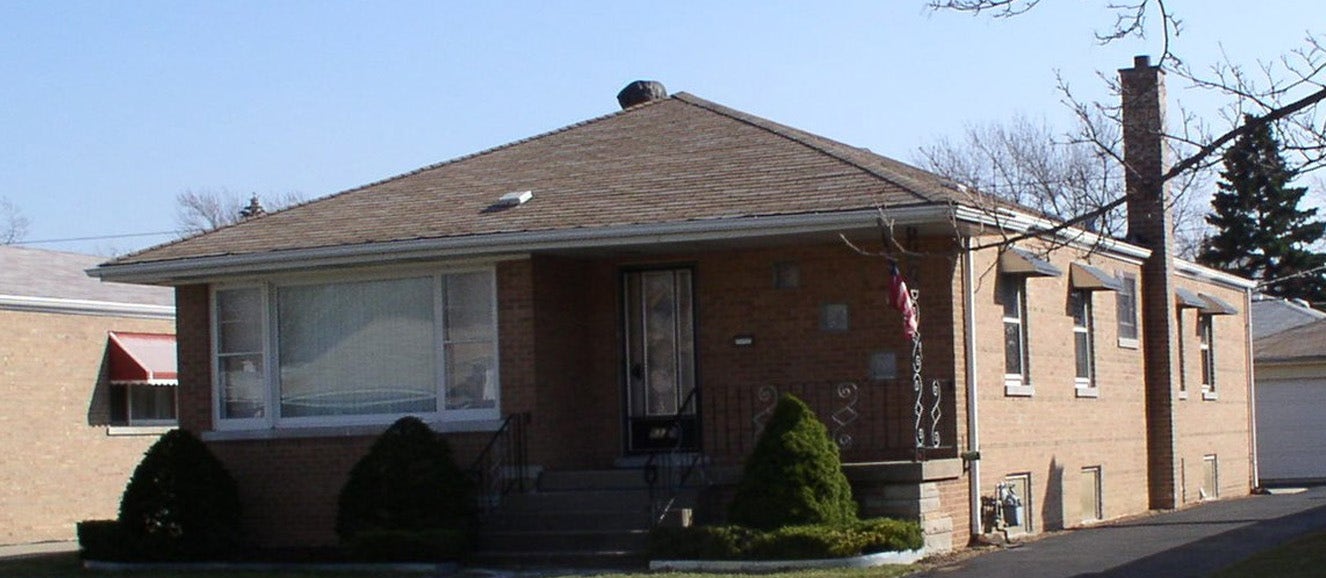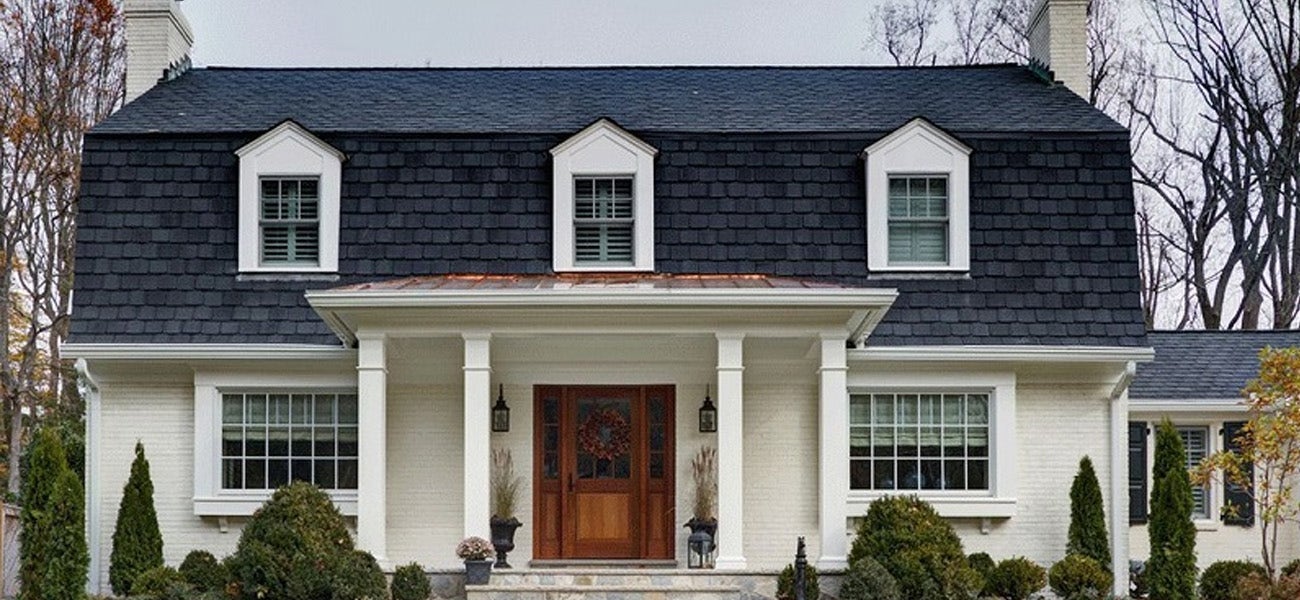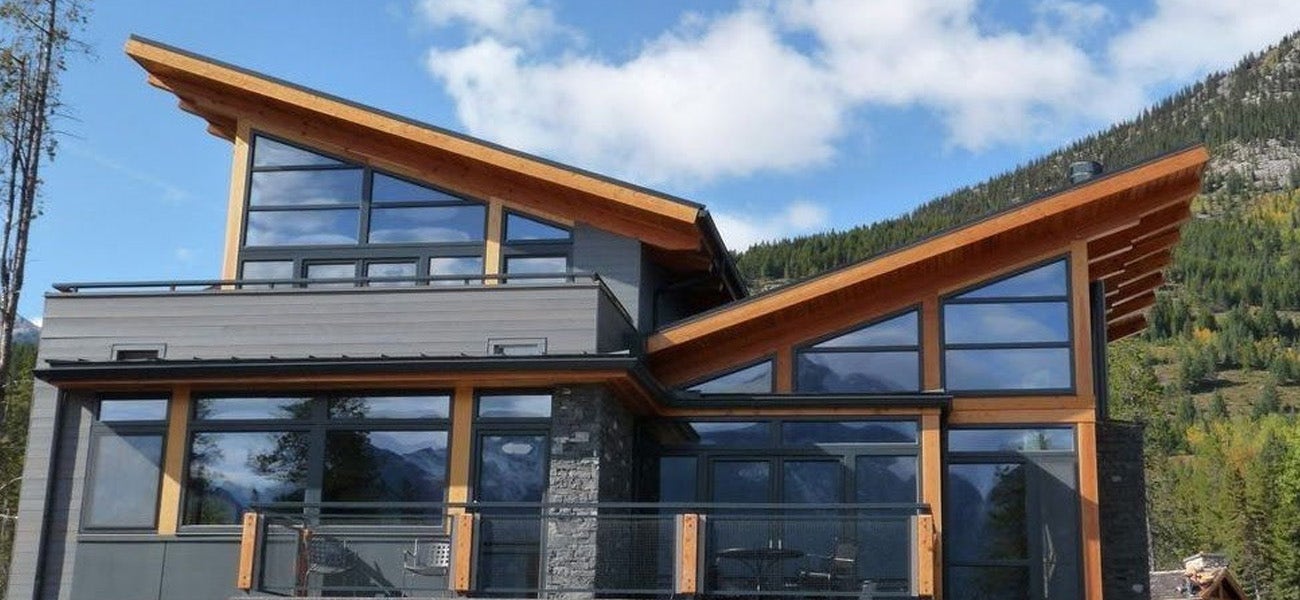5 Types of Pitched Roofs and Their Benefits

Roofs are an important component of any building. They provide shade and shelter from the elements while insulating a home, keeping the interior warm or cool depending on the weather outside. Roofs are also complex structures, and the material and the type of roof you choose for your property can have a significant impact on your home’s energy efficiency and the overall value of your home.
A pitched roof is a type of roof with a slope greater than ten degrees on all or part of its surface. It is one of the most popular types of roof in the UK, which is built to withstand all-weather conditions, including rain, wind, sun, snow, storm or sleet. Pitched roofs also come in many different forms, from the traditional gabled roof to the contemporary butterfly roof.
You'll also find that every pitched roof is different and comes with its own benefits, so there is likely a roofing style that fits your home’s specific needs, such as improved drainage, increased air circulation, or even aesthetics.
In this blog post, we will cover 5 of the most popular types of pitched roofs and their advantages:
Single-Pitched Roof
A single roof, also known as a mono-pitched or skillion roof, is a type of roof that features a single sloped surface. This is one of the simplest types of pitched roof, used mostly for extensions since Victorian times. But nowadays, you can find them in residential properties and modern houses in the UK. A single-pitched roof is typically supported by a series of rafters attached to plates at the top of the supporting walls, allowing for even weight distribution.
If you’re looking to build a roof for an extension, or even a home, a single-pitch roof could be your best option because it is cost-effective and also quick and easy to install. Single-sloped roofs also offer the additional benefit of effectively draining rainwater and snow, which are some of the most common issues associated with flat roofs. Besides, they create more indoor space and are more stylish, increasing the value and aesthetics of your home. In the roof below the customer has used a Dry Verge system to match the Pitched Roof Tiles.

Double-Pitched Roof
When most people think of a pitched roof, they likely picture a double-pitched roof—often known as a gable roof. This is a traditional roofing style and one of the most popular types of roof in the UK. The pitched roof is triangular in design, with two sloping sides that meet to form a ridge in the centre of the roof. In addition to rafters, it can also have a horizontal beam, called a "purlin", that provides intermediate support and takes some load off the rafters and boards.
Double-pitched roofs are visually appealing despite their simplicity. They are economical and easy to build, making them a popular choice for both new construction and renovation projects. A double-sloped surface also provides good air circulation and water drainage, which is beneficial in areas that experience heavy rainfall and snow during certain times of the year.

Hip Roof
The hip roof is another popular style of pitched roof, consisting of four sloping surfaces—one on each side—that all meet at a single top point, or the ridge. The pitched slopes can be gentle and symmetrical on all sides, allowing for greater air flow and enhanced aerodynamics since there are no flat ends on the roof. Hip roofs can thus provide better protection from harsh weather conditions, such as high winds, heavy rain, and snowfall. They are also far more resistant to wind and water damage than gable roofs.

Mansard Roof
A mansard roof, also called a French roof, is a four-sided pitched roof with double slopes on each side—roof surfaces on each end have both upper and lower slopes, with the latter being substantially steeper than the former. They were named after the 17th century French architect, Francois Mansart, and were a common type of roof on Paris hôtels as well as the chteaus of Balleroy, Blois, and Maisons.
Since then, mansard roofs' popularity has grown tremendously, owing to their classic elegance and a highly functional roof design that maximises headroom and space on the top-level floor. So, it’s no surprise that mansard roofs are one of the most common roof types around the world, particularly on traditional palaces and residential buildings.

Butterfly Roof
A butterfly roof is one of the most unconventional and modern-looking roof designs, with two slopes joining at an angle in the centre to form a more V-shaped appearance. They get their name from their resemblance to a butterfly’s wings, but they can also be thought of as an inverted double-pitched roof.
One of the major benefits of a butterfly roof is that it allows for the installation of larger windows and ventilation on its supporting walls. This can bring in fresh air and more natural light, reducing dark spots around a house. The inward roof design also allows rain water to be channelled to a drainage spout and recycled for garden or indoor usage, saving you money on water and energy costs. A green roof can be added onto the existing roof to help absorb rainwater, improve insulation and air circulation, and, of course, bring nature back to your doorstep.
Pitched roofs come in many shapes and sizes, from saltbox, gambrel to multi-pitched, each with its own advantages and disadvantages. The main purpose of a pitched roof is to protect your home from the elements, but the type of roof you choose can have a big impact on factors like strength, durability, energy efficiency, insulation, air circulation and even aesthetics. So it's important to weigh all your options carefully before making a decision.
Our Top Videos.


How to install a Velux Integra Electric Roof Window (5 Parts)
In this five-part guide, we take you through the full installation of a Velux GGU Centre Pivot Integra Roof Window onto an...


How to install a Duratech Centre-Pivot Pine Roof Window
Once you begin unpackaging the window, you’ll find in the box the brackets, the handle and the fixings. And there will also be some instructions...
Ideas & Advice
How-tos, tutorials and videos


How and why to use or snap a chalk line
Chalk lines are the fastest way to mark straight guidelines on flat surfaces. They are used extensively in the building and construction industry to speedily and accurately ‘draw’ straight lines between two points. Chalk lines are inexpensive tools...


Skylight Blinds: A Guide To The Different Types
Like many household product, blinds for skylight windows come in all shapes, sizes, and materials. Some are designed with a tangible purpose in mind, while others are more for show. One thing’s for sure - buying any type of skylight blind...








